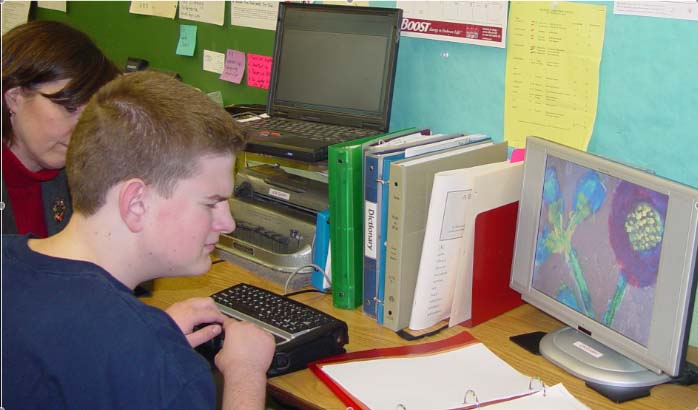
1. Sensory and Individual Learning Style
- An awareness of objects and people in the environment and recognition of what the child hears, sees, touches, smells or otherwise experiences
- Functional use of senses (hearing, vision, touch, smell, etc.) to acquire and process information
2. Communication Skills
- Vocabulary which is meaningful to the child in his or her home, school, and community environments
- A variety of methods of expressing and receiving information, wants and needs, and feelings in a variety of ways such as speech, sign languages, gestures, picture or object boards, Braille, communication devices, large print, audiotapes, etc.
- Skills in using technology, including adaptive aids, to enhance both visual and/or auditory skills: computers, closed circuit televisions, magnifiers, hearing enhancement devices.
3. Concept Development
- Concepts of body, space, and time (e.g., schedule and sequence of activities)
- An ability to apply academic learning to everyday life (e.g., functional reading and writing, money used and time and calendar etc.)
4. Orientation and Mobility
- An awareness of body position in relationship to environment
- Skills to travel as independently as possible in familiar and unfamiliar environments including use of devices such as a long white cane, monoculars, communication cards, etc. (with the method of their choice)
- Familiarity within specific environments (e.g., living environment, classroom, etc.)
5. Life Skills
- Strategies for organizing personal space, items in the environment, and daily care routines (how to prepare for getting dressed or eating, making one’s bed)
- Daily personal care skills such as eating, dressing, grooming, personal hygiene, and toileting independently
- Skills to manage one’s living environment (e.g., making one’s bed, preparing a meal, doing own laundry etc.)
- Home and personal management skills for grocery shopping, cleaning, cooking, and paying one’s bills
- Skills in accessing community for shopping, transportation, medical needs, leisure time and other personal needs
6. Social-Emotional Skills
- Body postures and facial expressions, which help, facilitate social interaction with others and replacement of inappropriate behaviors with socially acceptable behaviors
- Problem-solving and conflict-resolution skills with family, friends, and adults
- Strategies for initiating and maintaining interaction, and making and keeping friends
- An understanding and appropriate expression of one’s sexuality.
- Self-protection and refusal skills
- Age appropriate leisure activities
- An awareness of age appropriate dress and hygiene in relation to peer group
7. Self-Advocacy Skills
- An awareness and assertiveness regarding individual abilities and needs related to both vision and hearing loss (e.g., need to move closer to the board, need to turn on one’s hearing aid, etc.) in order to be comfortable in all situations
- An awareness and skills to select the choices available in everyday life and long range
- Strategies for becoming an active participant in the classroom or community by communicating what he or she needs to be comfortable, to learn, and to feel safe
- Methods necessary to obtain information for safety and medical purposes, as well as getting materials and resources at school, home, and in the community
8. School to Work
- An understanding of student work responsibilities, teacher/parent/ employer expectations, and the roles of various people within the student’s environments
- An understanding of work habits and skills such as finding and keeping a job, maintaining relationships with co-workers and employers, using time clocks, etc.
- A realistic and accurate concept of self, abilities, post school training potential, and future employment potential.